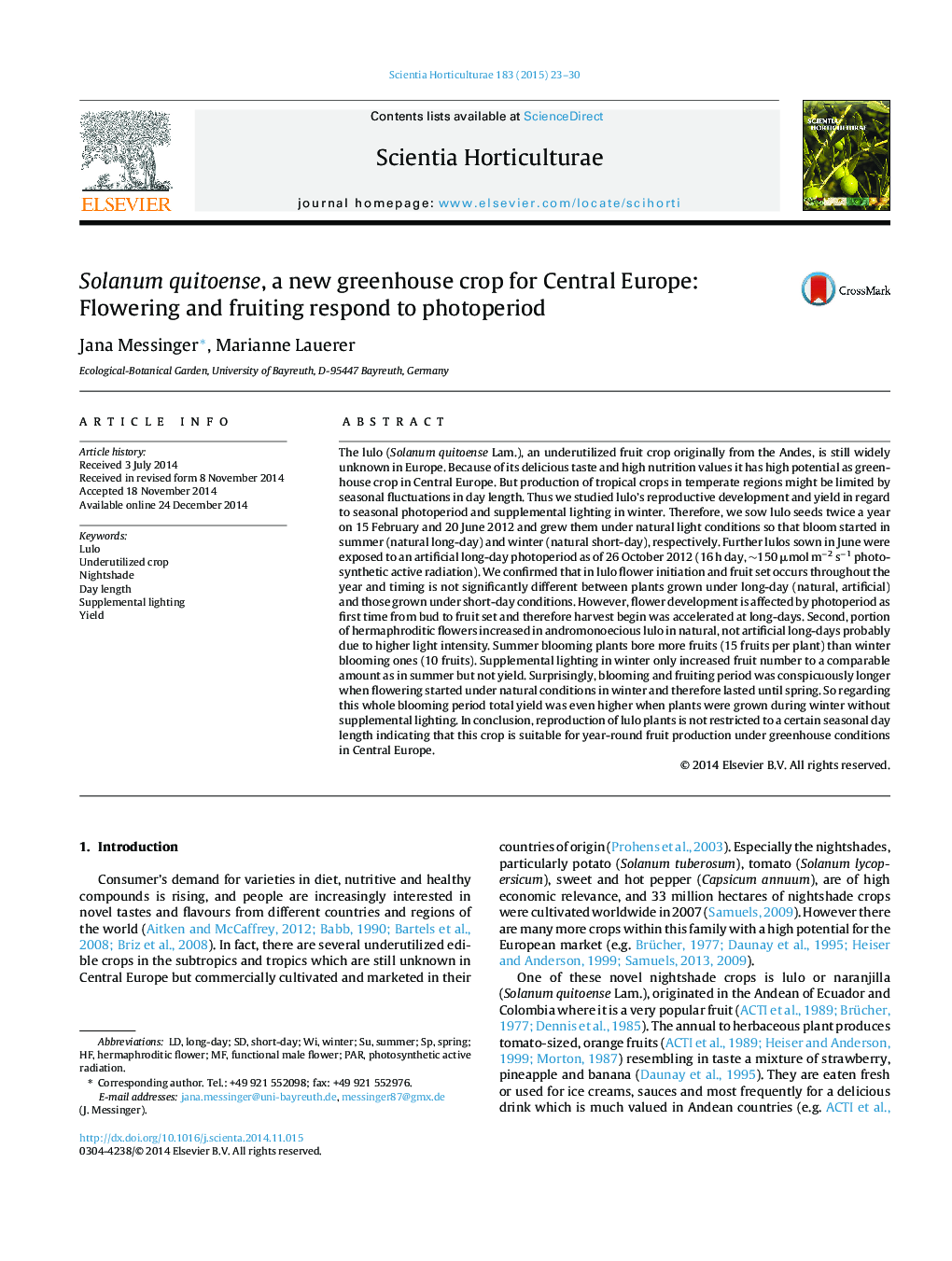| کد مقاله | کد نشریه | سال انتشار | مقاله انگلیسی | نسخه تمام متن |
|---|---|---|---|---|
| 6407115 | 1628815 | 2015 | 8 صفحه PDF | دانلود رایگان |

- Lulo flowered and fructified throughout the year at long-days and at short-days.
- Long-days accelerated harvest and increased fruit number but not yield.
- Artificial lighting in winter does not enhance yield compared to ambient light.
- Without lighting in winter harvest duration was longer and yield even higher.
- Sowing only twice a year ensures a year-round lulo fruit supply.
The lulo (Solanum quitoense Lam.), an underutilized fruit crop originally from the Andes, is still widely unknown in Europe. Because of its delicious taste and high nutrition values it has high potential as greenhouse crop in Central Europe. But production of tropical crops in temperate regions might be limited by seasonal fluctuations in day length. Thus we studied lulo's reproductive development and yield in regard to seasonal photoperiod and supplemental lighting in winter. Therefore, we sow lulo seeds twice a year on 15 February and 20 June 2012 and grew them under natural light conditions so that bloom started in summer (natural long-day) and winter (natural short-day), respectively. Further lulos sown in June were exposed to an artificial long-day photoperiod as of 26 October 2012 (16 h day, â¼150 μmol mâ2 sâ1 photosynthetic active radiation). We confirmed that in lulo flower initiation and fruit set occurs throughout the year and timing is not significantly different between plants grown under long-day (natural, artificial) and those grown under short-day conditions. However, flower development is affected by photoperiod as first time from bud to fruit set and therefore harvest begin was accelerated at long-days. Second, portion of hermaphroditic flowers increased in andromonoecious lulo in natural, not artificial long-days probably due to higher light intensity. Summer blooming plants bore more fruits (15 fruits per plant) than winter blooming ones (10 fruits). Supplemental lighting in winter only increased fruit number to a comparable amount as in summer but not yield. Surprisingly, blooming and fruiting period was conspicuously longer when flowering started under natural conditions in winter and therefore lasted until spring. So regarding this whole blooming period total yield was even higher when plants were grown during winter without supplemental lighting. In conclusion, reproduction of lulo plants is not restricted to a certain seasonal day length indicating that this crop is suitable for year-round fruit production under greenhouse conditions in Central Europe.
Journal: Scientia Horticulturae - Volume 183, 12 February 2015, Pages 23-30